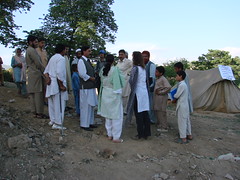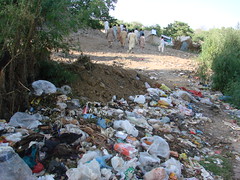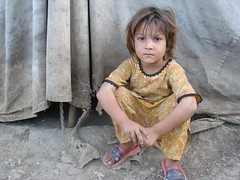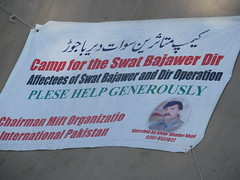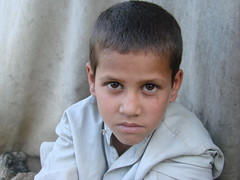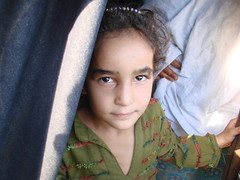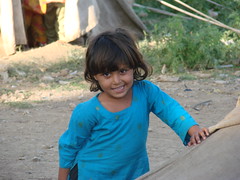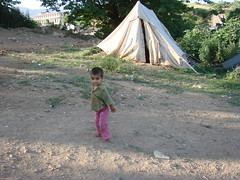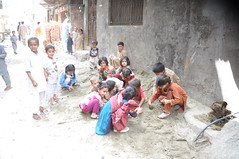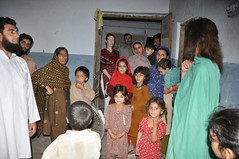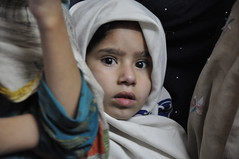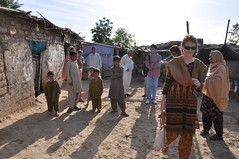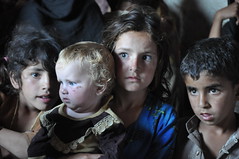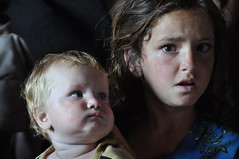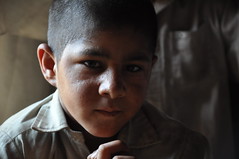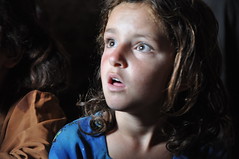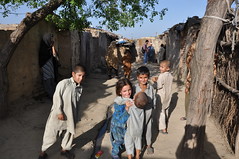Many in Pakistan, especially the generation of the 80’s and 90’s,
cut off from the 60’s & 70’s erra by the State’s crackdown on information, publication and news during Military regime of Gen Zia,
view Baloch Nationalism as a relatively recent phenomenon. The fact of the matter, however, is that Baloch Nationalist political and armed movements have recurrently arisen in the Balochistan after its division
among Iran, Afghanistan & British India in late 19
th and early 20
th century.
Original Balochistan:
The information regarding an original Baloch State is shady, But a great deal is known about the early Baloch history through recent academic research and different historically prominent resources, which include the work of the famous poet Firdousi, when he details out the war between Alexander The Great & Baloch when he returns to Babylon via Balochistan. The secret documents prepared by the British Indian government in late 19th century and early 20th century by the British Indian ambassadors to Khanate of Kallat, War descriptions of Baloch forces who fought against Astyages (585-550 B.C.) and surviving texts and records from 1200 B.C. put them as an effective military and political force in time of Cyrus The Great and Cambyses. And they point out that:
- Balochistan, a predominantly tribal state, has a loose, localized structure of power. Prime powers were delegated to the local ‘Sardar’. Khanate of Balochistan had its capital at Kallat.
- The pre-dominant life style of Baloch, was reported to be semi-Nomadic and agricultural.
- Baloch religions have evolved over the history of 2 millennia, but by late 19th century, it is on record that they are predominantly Sunni Muslims with exception of Zikiri’s in Turbat (still present in Turbat) and a minor population of Shia’s.
ThThe geographical area consisting Balochistan was
- Kech and Makran(East Makran is now part of Iran, West Makran is now part of Pakistan, previously part of Sultanate of Oman)
- Khanate of Kallat(Modern day Kallat Division, encompassing Panjgur, Turbat, Khuzdar, and probably Jafarabad & Naseerabad)
- Sibi
- Southern Punjab Districts of D.G. Khan, Rajanpur & Rahim Yar Khan
- Jacobabad(modern day Jacobabad distt. Of Sindh),
- Siestan (the modern day Siestan province of Iran including Zahidan, Taftan and port city of Chabahar)
- Registan ( South of Helmand River of Afghanistan, part of modern Afghan provinces of Farah & Nimruz)
- A migration to Oman, reported around 200 years ago, made a strong Baloch community there. currently Oman’s 35% population is Baloch. However, Baloch Nationalists don’t lay claim to this geographical area.
Mir Jalal Khan In the 12th century united a total of 44 Baloch tribes to form a consolidated Baloch political authority. Rind Lashkari’s established a Confederacy in 15th century in the command of legendary Mir Chakar Khan Rind. Khanate of Balochistan was established in the 17th century with headquarters in Kallat.
Division of Balochistan
Before the division of Balochistan, it was governed by Kahante of Kallat, recognized as an Independent state by British India. After the division of Balochistan (which was motivated by countering Russian influence in the region) and pleasing the pro-Russian Iran & pro-British Afghanistan, Kahante of Kallat was given the status of ‘Proctorate of Kallat’ and considered part of British India.
- The Perso-Baluch division (The Goldsmid Line) took place in 1871 and through 1895 till 1905, during which Siestan and West makran were awarded to Iran.
- Baloch Afghan frontiers were demarked in 1895, during which areas of Balochistan in Farah and Nimruz were given to Afghanistan.
- The British annexation of Balochistan in British India followed soon after which put the Jacobabad in Sindh and D.G. Khan in Punjab.
Annexation to Pakistan:
Khan of Kallat, on 15th August 1947, one day after lifting of British Raj from Indian Sub Continent, declared Balochistan as an independent state. Mr. Jinnah, whose party was supported by the Khan during the 1946 elections was close to Khan of Kallat. He insisted on annexation of Balochistan with Pakistan. His visit to Kallat, was part of the effort to convince him to annex to Pakistan.
On April 1, 1948, Balochistan was annexed to Pakistan, officially, but not without a military presence in Kallat and adjoining areas. Baloch Nationalist are of the view that it was a full scale invasion, but keeping in view Pakistan Army’s commitment in Kashmir and its resource lessness at the time, others argue that it was a will full act on part of Khan of Kallat. The two opposing arguments still exist today.
Rise of Baloch Nationalism
Late 1920’s and early 1930’s saw a major political and armed revolt against the British Indian government. It was a time when suffering of Baloch people was felt across India, it eventually led to Mr. Jinnah’s demand of rights for Balochistan and providing state services in Balochistan in his 14 point agenda of demands presented in 1929.
In 1948, when Balochistan was officially annexed to Pakistan, with promise of greater provincial autonomy. Many people including brother of the then Khan of Kallat, Karim Khan did not agree with it. He was in favour of an independent Balochistan. He waged a small guerilla resistance for around an year.
In 1954, When the Government of Pakistan made the West Pakistan ‘One Unit’, and abolished all the provinces, a political movement started in Balochistan. Demand of this movement was re-establishment of Balochistan as a province, and providing the political provincial rights promised in 1948. Army operation went underway in Kallat which led to arrest of Khan of Kallat, and many others. A Baloch leader, Nouroz Khan, led an armed campaign against the Army, he was arrested in 1959, and died in prison in 1964.
In 1973, after Mr. Bhutto’s visited Iran, the then Shah of Iran demanded that Pakistan should show its commitment to Iran as a friendly nation, and act against Baloch insurgents, crossing over to Iran’s western borders, from Pakistan. That resulted in a Military Operation in Balochistan.
The position of Pakistan Government was that this military operation was intended to crush the support elements for insurgency in Iran, while the Baloch position saw a rift towards an independent ideology rather than political autonomy as a province.
Soon after the discovery of 350 soviet machine guns and thousands of rounds of ammo in Iraqi Embassy, allegedly enroute for Kallat. Provincial government was dismissed and Army moved in Balochistan, with an alleged air support of Iranian Cobra Helicopters.
The number reported during that time by international media puts military casualties around 3,000 and tribesmen casualties around 5,000.
In 1977, when Gen. Zia took over, he declared victory in Balochistan and Army moved out.
It is perceived that there was a period of lull during 80’s. However many groups such as BPLF and BLA started to emerge during that time. The Government of Pakistan maintained that pro-Russian Communist Government in Afghanistan was behind funding and training of BPLF & BLA. It can be noted that the BLA’s policy of pursuing Greater Balochistan includes the Afghani Provinces of Fara and Nimruz, which is contradictory to the then Afghan Government’s position, on the other hand many analysts believe that after withdrawal of Russian troops from Afghanistan, BPLF seized to exist and BLA was reduced to a very small support base.
During Gen. Musharraf’s regime, Nawab Akbar Khan Bugti, the former C.M. of Balochistan, former Federal Minister, lead a media based campaign against Federal Governments policies towards Balochistan. Armed skirmishes were erupting around Balochistan targeting Gas pipelines and similar installations. A political dialogue led by PML-Q failed, the Army then again moved in Balochistan, which led to siege of Kohlu for weeks and Dera Bugti for months, and eventual death of Nawab Bugti.
The military spokesman of the time, maintained a position that Nawab was being supported by India via Afghanistan and had made an armed coup against the state. However opposition political parties, condemned this killing, and many liberal newspapers wrote editorials against this act.
Killing of Nawab Akbar Bugti was turning point for many Baloch leaders who believed in a political struggle for provincial autonomy, including Nawab Akhtar Mengal who, along with many others was arrested.
The infamous missing persons case, includes, the names of 450 Baloch nationalists as well, which eventually became the reason for illegal removal of Chief Justice of Pakistan.
A reported 900 Baloch tribesmen have lost there lives since then, engaged in conflict with the Army.
Balochistan Alaskan Model
When the new Government took power, the infamous constitutional package of Mr. Zardari, which was rejected by PML-N since it gave cover to unconstitutional orders of Gen. Musharraf of Nov 3, had infact, a proposition for Balochistan.
Soon after release of all Baloch leaders, with whom government went into dialogue, which led to formation of a clause in the package, that all resources in Balochistan were to be divided among province and Federation on a 80% provincial and 20% Federal share. No settler, not hailing from the current population of Balochistan will be given citizenship in Balochistan and right to vote. Only locals can vote. Gwadar port will be under control of Government of Balochistan.
Mr. Zardari cleverly tied it with the acceptance of the package as a whole, to create pressure on Mr. Nawaz Shareef. Mr. Nawaz Shareef rejected it on the pretext described earlier. Thus this political tug-of-war deprived people of Balochistan, with an important step towards addressing their suffering.
Unfortunately, an year has passed since then, and no one, from Government or the Opposition has said anything about it. Except the usual lip serving, nothing has been done.
Balochi Sex Slave scandal
A lot of Baloch were infuriated by this scandal. The details of this scandal surfaced with context to 23 year old Zarina Marri, a school teacher from a respected Baloch tribe, who was arrested in 2005 from Balochistan.
Mr. Munir Mengal, the managing director of a Balochi-language television channel, was arrested on April 4, 2006 from Karachi International airport by the state intelligence agencies and transferred to a secret jail in Karachi for nine months He narrated the story of the forced sex slavery of the young teacher Zarina Marri whom he encountered in a military cell. He was of the view that many other young women were held in captivity and forced into sex slavery; this is used as a tool to disgrace the rebellious Baloch Tribes.
Reporters Sans Frontiers (RSF) and Asian Human Rights Commission has issued statement validating the fears of Baloch Nationalists. Other Baloch Nationalists have also reported similar incidents.
Resignation of Baloch Leaders from Parliament and Senate.
Senator Sanaullah Baloch resigned from Senate, soon after elections citing ‘Concurrent List’ and short falls of 1973 constitution and military actions as reasons for suffering of people of Balochistan. The Balochistan National Party had resigned all its seats from parliament in protest over killing of Nawab Akbar Bugti .
This is creating fears among many, that Baloch Nationalists, are moving away from parliamentary and mainstream politics, as they don’t see any change in sufferings of Baloch people. The only path left, then, is either that of a military engagement or political struggle for a sovereign Balochistan.
Recent Killing of Baloch Nationalist Leaders:
Bodies of three prominent Baloch nationalist leaders, Baloch National Movement chairman Ghulam Mohammad Baloch, Baloch Republican Party members Lala Muneer Baloch and Sher Mohammad Baloch whose bodies were found in Turbat, which sparked a violent streak of protests across Balochistan and Karachi. These members were reportedly arrested from the office of a former Opposition Leader in Balochistan Parliament. The Army spokesman has denied it categorically.
Nawab Akhtar Mengal, a prominent Baloch leader, and former parliamentarian, however, maintains his accusations against state intelligence agencies.
MQM held a rally on 12th April against the killings, while Supreme Court Bar Association has called for a week long strike of courts by Lawyers, All major political parties have condemned this act, as well as UN, US and Pakistan Army.
A statement issued by the US embassy confirmed that BNM leader Ghulam Mohammed Baloch played an active role in securing the release of American citizen and UNHCR official John Solecki, who was recently freed after being held for over two months.
The Modern Balochistan
According to Najam Sethi, editor-in-chief of Daily Times, in his T.V. program on April 12, for the first time in history of Balochistan a vast urban middle class is rising, it is nationalist in its political outlook. If something regarding suffering of Baloch people is not done soon, it will move along with the separatists version of a political future.
Baloch Nationalism in 50’s and 60’s was considered under the effect of Marxist-Leninist ideology. Even today, it is considered religiously liberal and moderate. Many analysts believe that it can be a force which is not allowing Talbanization to take place in Balochistan, if Baloch Nationalists are not heard, who are increasing their sympathies with separatist military groups like Baloch Liberation Army (BLA) things might take another turn.
The Baloch Nationalist movement, has taken a position, questioning participation in parliamentary politics. Even the mainstream politicians like Nawab Akhtar Mengal, are now airing their concerns of becoming part of political, parliamentary process.
The Pashtun population of the areas such as Pishin, Ziarat & Quetta consider themselves as a separate ethnic group. In 1992 armed clashes between the two led to imposition of curfew in Quetta and adjoining areas. This is another issue, relating to identity of a community of Balochistan, which is un-resolved.
Hazara population dominating the largest urban area of the province, Quetta, considers itself as a separate ethnic groups. They are not considered Baloch by Balochi’s. Though a minor population, but influential in Quetta and surrounding areas, have been ignored in the past, and remain one of the under progressed communities.
Pakistani media, military and Government Spokesmen, have repeatedly said that a cash in-flux from Indian Embassies in Afghan cities near Pakistan border, is the cause of recent upheaval.
Whatever the case, If issues of Balochistan are not addressed, and they are either ignored, or crushed upon by use of force, they might, soon, unanimously opt for an independent country, rather than a Province with liberties and rights they have demand in past.
Some Stats (provided by UNPO)
Population
The total population of Baloch is 13 to 15 million people. Although there are no independent figures about Baloch population in Iran, it is approximated at 4 million Baloch, who do not enjoy even limited political and cultural autonomy. The Baloch population is deliberately sidelined and marginalized in policy and practice by the occupant governments of Pakistan, Iran & Afghanistan.
Language
The Baloch speak Balochi and Brahui derived from the Indo-European - and Dravidian branches of language respectively.
Culture and religion
The majority of Baloch are Sunni Muslims with small minorities of Shia and Zekri.
References:



